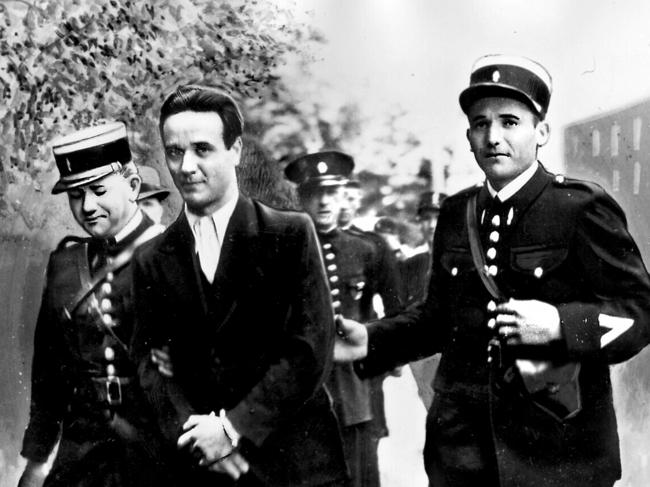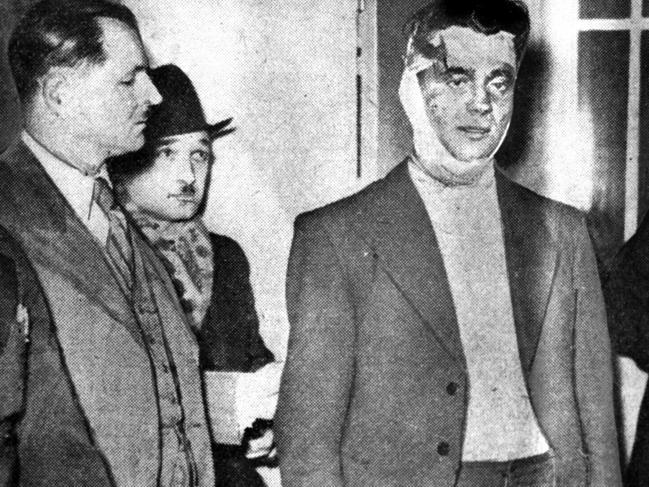Guillotine’s last public execution was a debacle
A crowd gathered in front of Saint-Pierre prison in Versailles 80 years ago today to see the last public execution by guillotine
It was a macabre spectacle. A guillotine had been set up in front of the gates of the Saint-Pierre prison in Versailles. A crowd of hundreds had gathered, among them the 17-year-old Christopher Lee, later famous as an actor. He had recently left school, was unemployed and taking time to travel in France. Like many other curious onlookers he had heard about the execution, was intrigued and decided to attend.
Some in the throng were journalists, some were police, others were there to make sure the condemned man, a German named Eugen Weidmann, was properly dispatched. Some whistled, some jeered, as Weidmann was led to his execution. Someone secretly filmed the spectacle from an upstairs apartment window.
Weidmann was strapped to the guillotine’s hinged body board, the bascule, but his head didn’t sit properly in the lunette, the circular opening below the blade. An officer grabbed him by the hair to stretch his neck out. The blade dropped, his head tumbled into a basket and his body was pushed into a coffin. People then rushed forward to dip handkerchiefs into his blood, either as a gruesome souvenir or because some believed Weidmann to be something akin to a saint.

The execution, which took place 80 years ago today on June 17, 1939, was the last public execution in France. Weidman was a callous killer who claimed six victims for minimal personal gain. His case drew a lot of public attention — partly because he was a German who committed crimes in France. He was also handsome, well-read, articulate and apparently pious. But the behaviour of the crowd convinced French president Albert Lebrun to ban public executions.
Weidmann was born in Frankfurt Am Main in Germany in 1908, into the well-off family of an agent for an export company. Although well educated he turned to petty crime, serving his first sentence for theft at 16.
He then travelled to Canada, where he was also imprisoned for theft, and later to France. Inside, he was a model prisoner who read literature, philosophy and religious works. He also befriended other criminals who became his accomplices: Roger Millions, Jean Blanc and Fritz Frommer.
MORE
Weidmann and his comrades teamed up to waylay wealthy tourists in France. They rented a villa outside Paris and the tall, handsome Weidmann, who spoke fluent French, English and some Portuguese, lured victims. Their first attempt was botched, the tourist they captured fought so hard they let him go. Then in July 1937 Weidmann met Jean de Koven, an American and professional dancer, who was in Paris to visit her aunt. She wrote to a friend “I have just met a charming German of keen intelligence who calls himself Siegfried. Perhaps I am going to another Wagnerian role — who knows? I am going to visit him tomorrow at his villa in a beautiful place near a famous mansion that Napoleon gave Josephine.”

She went to the villa where Weidmann strangled her and buried her in the garden, along with the camera she had used to take photos of Weidmann (they would later be used in evidence). De Koven’s aunt received a ransom note asking for $500. Police were initially not convinced that she had really been kidnapped, until de Koven’s travellers cheques started turning up with badly forged signatures on them. They were being cashed by a mistress of one of Weidmann’s accomplices. Police then went public with what they were now calling a “disappearance”.
Weidmann had developed a taste for murder. In September he hired a chauffeur, Joseph Couffy, who he shot in the back of the neck, stealing his car and some cash. Next was Jasmine Keller, lured to Paris on October 3 with the promise of a job, she too was shot in the neck, robbed of a diamond ring and even less money. On October 16, press agent Roger Leblond was lured by a fake business proposal, Weidmann shot him and robbed him. On November 22 he shot his German-Jewish accomplice Frommer and on November 27 he shot a real estate agent who was showing him a villa.
In an investigation worthy of a Maigret novel, detective Llamado Primborgne tracked Weidmann down. When police turned up at the villa, Weidmann tried to shoot them but an officer grabbed a hammer and knocked him into submission. Under questioning he quickly confessed.
His trial attracted a lot of attention. But while Weidmann won sympathy for his bandaged head, his charm, good looks and piety, the jury didn’t fall for it. He was sentenced to death and executed by the guillotine.



